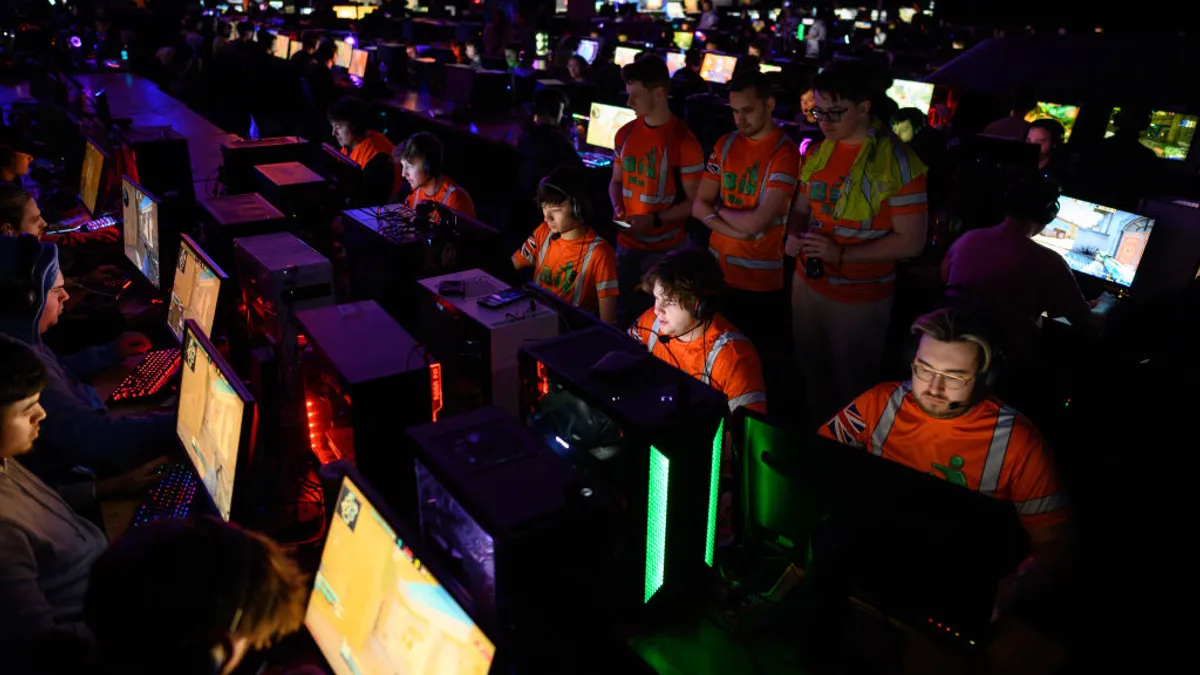Dive Brief:
-
As interest in esports continues to grow, districts are developing curricula that draws connections to the competitive multiplayer gaming phenomenon to help engage students and build skills to support potential future careers.
-
Tying classroom learning to esports can help drive discovery and learning, particularly in STEM subjects, said Kevin Brown, chief academic officer for the nonprofit Network of Academic and Scholastic Esports Federations.
-
However, educators and stakeholders should make sure there is an academic reason for why esports is being introduced in the classroom. “We have to be intentional and thoughtful about it,” Brown said.
Dive Insight:
Brown, who is also an instructor at Orange County School of the Arts and Santa Ana College, has helped to draft a curriculum that links esports and online gaming into learning standards. And NASEF has developed a curriculum that is free, aligned to standards and customizable.
Teachers can draft lessons on their own, Brown said, but adds that approach can be hit-or-miss.
Schools have been integrating competitive video gaming into both curricular and extracurricular activities for several years as career opportunities, from competitive playing to designing games, have grown.
Brown explains to educators that games with a peripheral connection to a subject — physics or English language arts — will not necessarily embed a logical connection to esports. While playing games can be fun, that alone will not further learning objectives.
Brown recently worked with a biology teacher in Japan who was struggling to link esports into the curriculum.
He asked the educator what students loved to learn, and he found that students loved learning about the five senses. “I said, ‘How do video gamers play? They need eye-hand coordination.'”
That led to the idea of drafting an entire lesson on eye health using video games as the testing space. Students would track metrics like how much rest they got at night and what they ate during the day, then chart whether they improved during their game of choice.
NASEF has also helped to open esports clubs at the high school level. Brown said there are over 7,000 clubs in the U.S., and 350,000 students take part globally. He added that the clubs help open the door to projects in the classroom that are likely to help engage students more, such as writing a website for the club itself.
“If you take a web design class every year, and the assignment is to build Flora’s Flower Shop with HTML, that’s boring,” Brown said. “But if you’re learning to code to create the web presence for your club, now that’s a reason.”






 Dive Awards
Dive Awards





